The tax year 2021 brought us new and complex schedules for reporting pass-through foreign information. Schedules K-2 and K-3 were created to help standardize how flow-through entities report an owner’s (whether a partner in a partnership or an S-corporation shareholder) portion of foreign income, deductions, credits, etc. Developments around this new reporting requirement are important to follow since there could be significant penalties for failure to timely file such information. The IRS recently released draft guidance on new exceptions to filing these schedules. Furthermore, if you meet certain requirements, you may be able to avoid filing these Schedules altogether.
The IRS’s instructions for the 2022 schedules for partnerships and S-corporations added a new “Domestic Filing Exception.” This article will provide an overview of this new exception, its requirements, timelines, and how to take advantage of it. We’ll also discuss the background of who is impacted by and who should be aware of these changes. Due to the continuous changes in this area, the IRS has created a resource in the form of a forum called “Schedules K-2 and K-3 Frequently Asked Questions (Forms 1065, 1120S, and 8865).” We recommend reviewing this information from the IRS to gain a deeper understanding of this material.
Who Are the Impacted Parties?
It’s important to note that even domestic pass-through entities (partnerships and S-corporations) with no international activity or foreign owners may still be required to file parts of Schedules K-2 and K-3. Some items that trigger these filings for flow-through entities with no foreign activities are the calculation of the foreign tax credit, foreign-derived intangible income (FDII), and base erosion and anti-abuse tax (BEAT) at the partner/shareholder level. Generally, flow-through entities must pay close attention to these developments. Some examples of foreign activity that also trigger filing requirements include having foreign owners (whether or indirect), interests in foreign entities, foreign income or loss, and foreign taxes paid or accrued.
Penalties
For the 2021 tax year, failure to include these Schedules subjected taxpayers to late filing penalties of $210 per month per partner or shareholder. As you can imagine, taxpayers with many owners could be subject to significant penalties. There was also an additional $280 penalty, per partner or shareholder, for failure to accurately complete the schedules. Moreover, if required, you must complete these forms for each partner or shareholder and ensure the information is correct and complete. However, for 2021 only, the IRS issued penalty relief for those who attempted to prepare these forms in good faith. If failure to file these schedules was an intentional act, increased penalties may apply. The same penalty relief has not been granted for 2022.
Domestic Filing Exception
With the IRS guidance released on December 2, 2022, a new exception is available for pass-through entities to avoid filing Schedules K-2 and K-3. To claim this exception, the pass-through entity must meet 4 tests (3 tests for S-corporations). These tests include having no or limited foreign activity, having only certain direct domestic partners (not applicable to S-corporations), notifying partners and shareholders, and not receiving any requests from owners within the ‘one-month date.’ Planning should be done now to properly and timely prepare to meet these tests.
The Four Tests Defined
The first test can be met if an entity has limited or no foreign activity. The entity has limited foreign activity if the foreign activity is only foreign passive income (dividend, interest, etc.) reported in payee statement, and up to $300 of foreign income taxes paid or accrued by the pass-through entity.
The second test can be met by having all domestic owners and is only applicable for partnerships (S-corporations do not have to meet this test to qualify for the domestic filing exception). The direct owners must be U.S. citizens or resident aliens, domestic estates, grantor trusts, non-grantor trusts, S-corporation with a single owner, and single-member LLCs with a U.S citizen or resident alien owner. Note that a partnership has that a partner that is a domestic partnership would be not meet this test.
If you meet the first two tests, you can move forward with the third test, notifying the owners no later than the issuance of Schedule K-1 that they will not be receiving Schedule K-3 unless requested. This notification can be provided as an attachment to the Schedule K-1, however, the notification may be provided earlier to allow the owners time to request the Schedule K-3.
The fourth test comes down to timing. The ‘one-month test’ states that the entity must not receive any requests 1 month before the return filing date (the “one-month date”) from any owner for Schedule K-3 information. If no owner requests this information, the entity need not file Schedules K-2 and K-3. If an owner requests this information on or before the one-month date, the entity will need to provide Schedule K-3 to the requesting owner and file Schedule K-2 with the entity’s tax return. If the request is received after the one-month date (even after the filing of the tax return), the entity need not file Schedule K-2 with the tax return. However, it does need to provide the Schedule K-3 information to the requesting owner within one month of the date requested.
Claiming the Exclusion – How and When
If a pass-through entity meets the first two tests of having little or no foreign activity and having only domestic owners (for partnerships), it must notify all its owners by the date Schedule K-1 is delivered that they will not be provided a K-3 unless requested.
As you can see, these rules are complex. For partnerships and S-corporations, the domestic filing exception is very limited due to the tests outlined above. Please contact your WG tax advisor if you have any questions or to discuss the Schedule K-3 exceptions above.




